What Is Grouting?
Important Point
They are used in repairing concrete cracks, filling seams and gaps in tiles, gaps for sealing and waterproofing, and for soil stabilization.
It is also used to give additional strength to the foundations of load-bearing structures.
The grating is basically a process of injecting a pumpable material into a structure to change its physical properties.
There are different types of grouting, cement grouting, chemical grouting, and bituminous grating, depending on the material used, which is often referred to as grouting work.
Resins are also sometimes used as grout materials.
The grating is commonly used to fill cracks and voids in soil or rock.
Also, it is used to strengthen the soil and make it impermeable.
Cracks are used in a variety of applications such as water repair, stopping in submerged structures such as canals, tunnels, etc., filling seams between tiles and stabilizing the soil.
Here we have given information about the type of grouts used in the repair of cracks.
Also, read: Estimation for Building Works | Centre Line Method | Long and Short Wall or Out and in to in a method
Advantages of Grouting Include:
This can be done on almost any ground condition.
- It does not induce vibration and can be controlled to avoid structural damage.
- Improvement in-ground structures can be measured.
- Very useful for limited space and low headroom applications.
- Used for slab jacking that lifts or levels the deformed foundation.
- It can be installed adjacent to existing walls.
- Can be used to control seepage, groundwater flow, and hazardous waste materials Process and its types.
Also, read: Carbon Steel vs. Stainless Steel | What Is Carbon Steel | What Is Stainless Steel
Useful Article for You
- What Is Composite Wood
- What Is the Difference Between a Shower Pan and a Shower Base?
- What Is Raft
- What Is a Window Panel
- What Is Rebar Made Of
- What Is Crane
- What Is a Frame Structure
- What Is the Measurement for a Queen Size Bed
- What Is Considered Livable Space
- What Is One Way You Can Save Electricity?
- What Is Mdf Mean
- What Is a Bundle of Shingles
- What Is a Gallon of Water Weigh
- What Is Window Sash
- Types of Levels in Construction
- What Is a Sieve Analysis
- Types of Quarry
- What Is the Little Black Diamond on a Tape Measure
- What Is the Difference Between a Bolt and a Screw?
- What Is Overhang
- What Is Sand Blasting
- What Is a Walk in Basement
- Explain How Oil Paint Is Made. What Is the Vehicle?
- What Is a Span Bridge
Types of Materials Are Used for Grouting:
- Cement Grouting: Cement Grouting is the injection under pressure of grouting cement or grout to fill voids or fractures in the soil, rock unit or concrete structure. Cement Grouting is a process by which cement is injected under pressure to fill fractures and voids in concrete structures.
- Chemical Grouting: Chemical grouting transforms granular soils into sandstone-like masses by filling the voids with a low viscosity, non-particulate grout. The chemical grout is injected under pressure through the ports. The grout permeates the soil and hardens, creating a sandstone-like mass.
- Bentonite Grouting: Bentonite Grout is a specially formulated sodium bentonite. It can be used for drilled hole abandonment, water well grout, sealing monitoring well casing or as a geothermal grout.
- Resin Grouting: Traditional grout is made from a cement based mix. It’s not waterproof and actually absorbs water when it becomes wet. It also absorbs stains easily, as anyone who has scrubbed grout will attest to. Epoxy grout on the other hand, is made of epoxy resins combined with a filler powder.
- Bituminous Grouting: Hot Bitumen Grouting is a special type of grouting where melted bitumen is used as grouting material. When hot bitumen is injected into medium saturated with water, it cools quickly at the interface, and turns from its fluid state to a highly viscous, tenaciously sticky, elasto-plastic state.
Type of Grouting
1. G1 Grouting
The grout shall be a non-shrinking, free-flow cementless grout with a minimum compressive strength at least equal to the foundation concrete, but not less than 30 N / mm2 in 7 days and 40 N / mm2 in 28 days. Will be less than
2. G2 Grouting
The grout will be a proprietary non-compressible cemented high strength grout, e.g., FOSROC’s Conbextra GP2 ‘, Sikka and MC-Beauchemie Emcekrete or likewise approved by the EIC.
Specific locations for the application will be shown in the diagram.
The minimum compressive strength of grout will be 50 N / mm2 in 7 days and 60 N / mm2 in 28 days.
The flexible strength of grout should exceed 9 N / mm2 in 28 days.
Experiment of Grouting
Joints for grouting bearings, machine foundations, column joints in precast construction, etc.
- For grout anchors in concrete
- To grout cavities, gaps, and in concrete Usage
Characteristics of Grouting
Non-corrosive
- Not flammable, non-toxic
- Shrinkage compensated
- Process and its Specification
- Substrate preparation
- Able Adjustable Fixture
- Very good flow characteristics
- Excellent Bond to Concrete
- No segment or bleeding
- High final strengths
- Easy to use (ready to mix powder)
- Easy to mix, only add water
- Initial expansion by gas generation
- Impact and vibration resistant
Also, read: Curing In Construction | Concrete Cure Time | Methods of curing
Mixture of Grouting
- For flowable: water : powder = 0.14 to 0.16 by weight (4.2 L to 4.8 liters of water per 30 kg bag).
- For Por able: Water : powder = 0.12 to 0.14 by weight (3.6 L to 4.2 liters of water per 30 kg bag).
- Mixing Time: – Minimum 3 minutes
Mixing Tools of Grouting
- Mix the grout powder in the correct proportions with water with a low speed (maximum 500 rpm) electric drill so as not to put too much air.
- Pour about 80 to 90% of the required water into the mixing drum, and then add the balance water.
- Depending on the desired stability and flow properties, the mixing ratio can be adjusted. Do not use a solid tilt mixer.
Useful Article For You
- Flight of Stairs
- Sheeps Foot Roller
- Moment Frame
- Edm Instrument
- Monolithic Slab
- Zero Force Members
- How Much Does a Yard of Concrete Weigh
- Live Load Vs Dead Load
- Cmu Wall Meaning
- Gradient Road
- Pile-Cap
- Bond Breaker
- Budget Sunroom Ideas
- What Is Gypsum Board
- Types of Vaulted Ceilings
- Concrete Cold Joint
- Well Points
- Abutment Bridge
- Finishing Plaster
- Spandrel Beam
- How Does Baking Soda Remove Blood from Carpet
- What Are Forms in Construction
- Dry Pack Mortar
- Wall Material
- How Heavy Is Dirt
- Tender Meaning in Architecture
Types of Grout for Ceramic Tile
There are four basic types of grout:
- Unsanded Grout:
- Finely Sanded Grout:
- Quarry TypeGrout:
- Epoxy Grout:
1. Unsanded Grout
2. Finely Sanded Grout
3. Quarry Type Grout
This is the same as finely sanded grout for ceramic tiles except that a coarser grade of sand is used.
- The quarry-type grout is used for joints that are 3/8” wide to 1/2” wide such as those used with Saltillo tiles.
4. Epoxy Grout
This consists of an epoxy resin and hardener.
- Epoxy grout for ceramic tile is highly resistant to stains and chemicals and has a tremendous bonding strength.
- It is ideal for countertops and other areas susceptible to stains.
Methods of Grouting
Grouting methods include permeation, compaction, slurry, jet grouting, deep soil mixing and mini-piles.
Grouting
Grouting is the process of injecting material into cavities or cracks in concrete, masonry structure, soil, rock-mass to increase the structure’s load-bearing capacity refers to grouting and the material used for this objective is called grouting.
Types of Grouting:
- Unsanded/Non-sanded Grout
- Sanded Grout.
- Epoxy Grout.
- Furan Grout.
Epoxy Grout:
Epoxy grout on the other hand, is made of epoxy resins combined with a filler powder. This makes it waterproof and almost completely resistant to stains. It’s durability makes it the ideal choice for splashbacks, floors and high-traffic areas. Epoxy grout is more difficult to apply than traditional grout.
Application of Grouting
- Stopping major water inflows in mines, tunnels, parkades, dams and underground structures in general.
- Soil and rock grouting.
- Protective coatings, gels, mortars to protect steel, concrete reservoirs and floors against chemical attack (chemical plants, pharmaceutical industry, mills.
- Environmental applications.
Different Types of Grouting
- Unsanded grout : This is used for wall tiles where the grout joint is less than 1/8” wide.
- Finely sanded grout: This is used for floor tiles where the joints are 1/8” to 3/8” wide.
- Quarry-type grout: This is the same as finely sanded grout for ceramic til𝚎s except that a coarser grade of sand is used. The quarry-type grout is used for joints that are 3/8” wide to 1/2” wide such as those used with Saltillo tiles.
- Epoxy grout: This consists of an epoxy resin and hardener. Epoxy grout for ceramic til𝚎 is highly resistant to stains and chemicals and has a tremendous bonding strength. It is ideal for countertops and other areas susceptible to stains.
Grouting Process
- Choose a Grout Color.
- Apply the Grout.
- Hold the Grout Float at a 90-Degree Angle.
- Wipe the Tile With a Damp Sponge.
- Use a Damp Cloth to Remove the Haze.
- Apply the Sealer.
- Caulk Along Baseboards and Walls.
Cement Grouting Method
Cement Grouting is the injection under pressure of cement or grout to fill voids or fractures in the soil, rock unit or concrete structure. Cement Grouting is a process by which cement is injected under pressure to fill fractures and voids in concrete structures.
Grouting Material
Grout is a composite material generally consisting of water, cement, and sand. It is typically used for filling voids under machines or other structural elements, sealing joints and openings in surfaces and reinforcing existing structures.
IS code for grouting
A fundamentvl requirement of a grout is that it shall develop adequate gel strength after a control- Page 11 IS 14343 : 1996 lable interval of time. This should be determined by relevant test procedures.
What Is Grouting in Construction?
Grouting in civil engineering refers to the injection of pumpable materials into a soil or rock formation to change its physical characteristics. Grout may also be used in the formation of pile foundations, ground anchors, under-reaming, underpinning, in road construction, dam construction, and other applications
Like this post? Share it with your friends!
Suggested Read –
- Types of Damp
- Types of Masonry Joints
- Different Types of Slabs
- Dam Advantage and Disadvantage
- Difference Between Carpet Area and Built-up Area
- What Is a Field Dry Density Test | Different Type of Field Density Tests
- What Is Plaster | Plaster Ratio | History of Plastering | Requirements of Good Plaster
- What Is Glass Fiber Reinforced Gypsum | Applications of GFRG | Disadvantages of The GFRG Panel
Originally posted 2023-09-06 14:30:06.
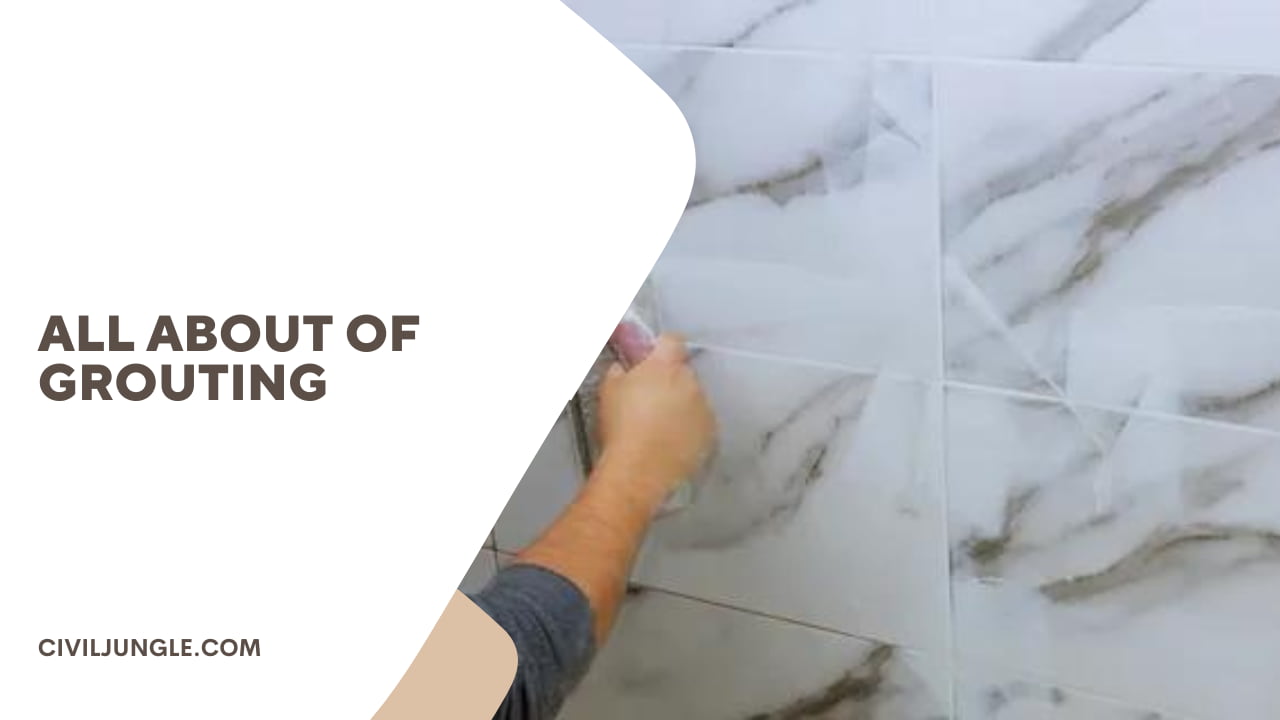
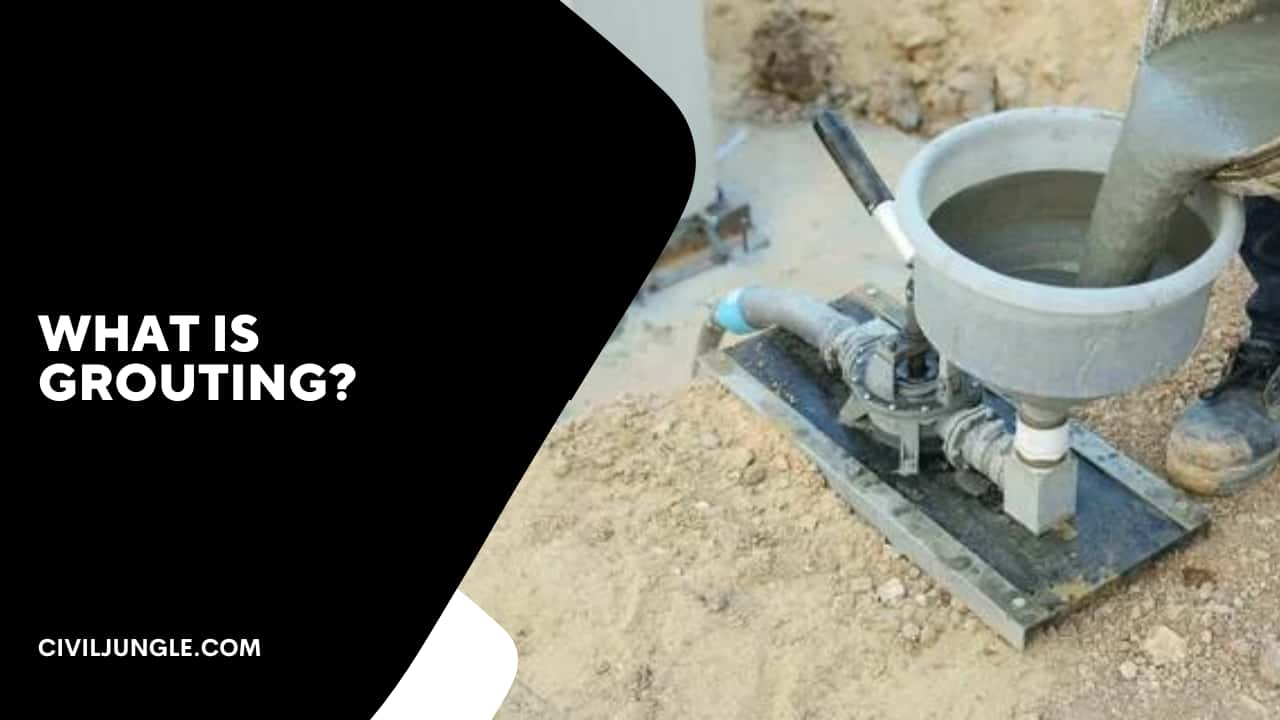
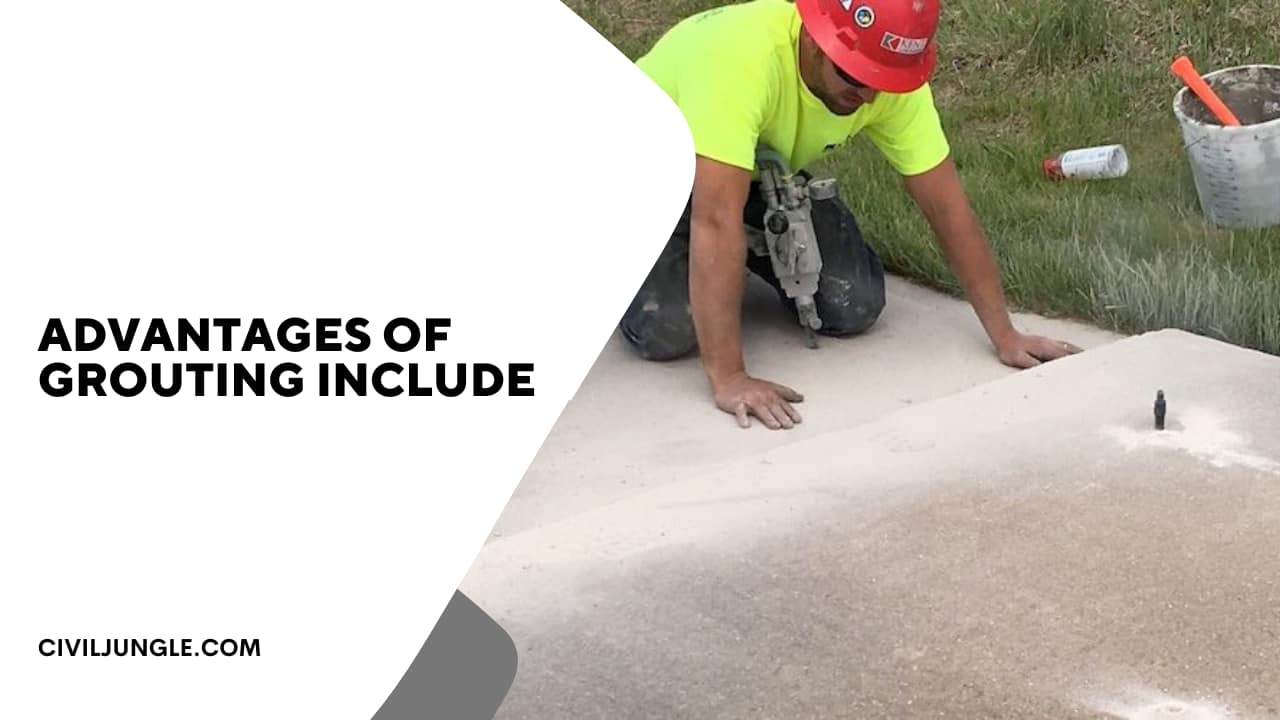 This can be done on almost any ground condition.
This can be done on almost any ground condition.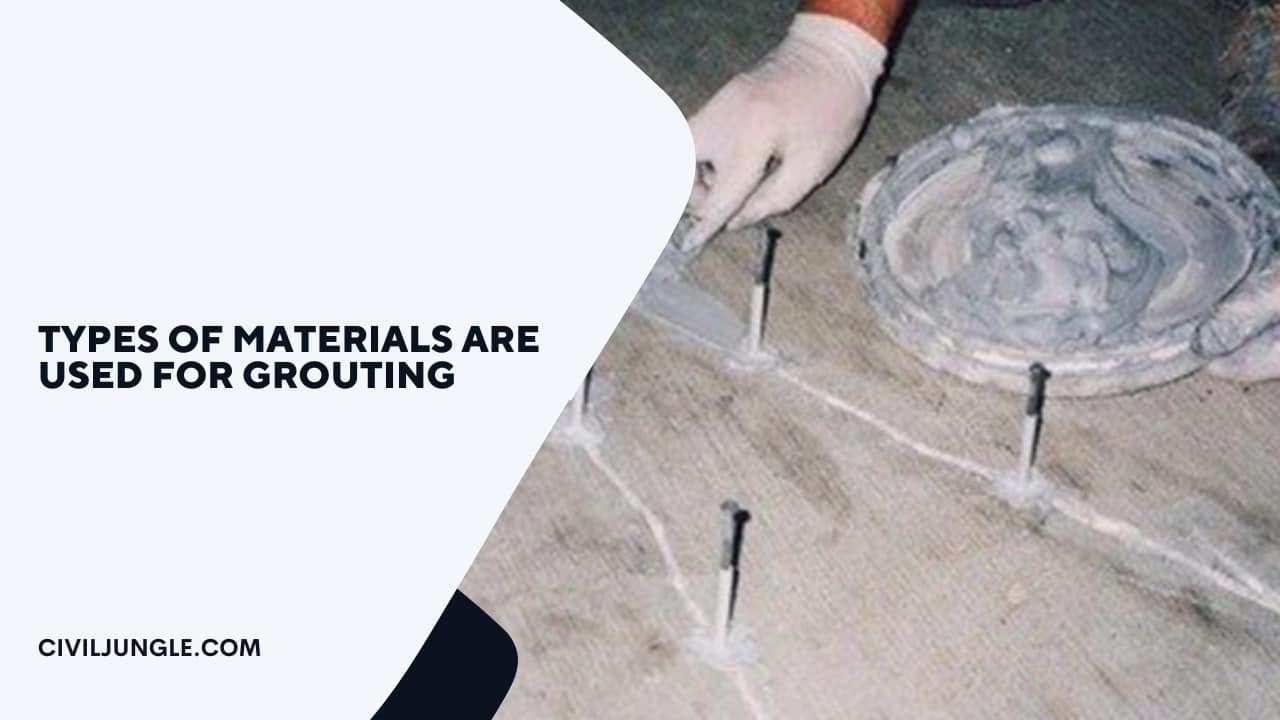


 Joints for grouting bearings, machine foundations,
Joints for grouting bearings, machine foundations, 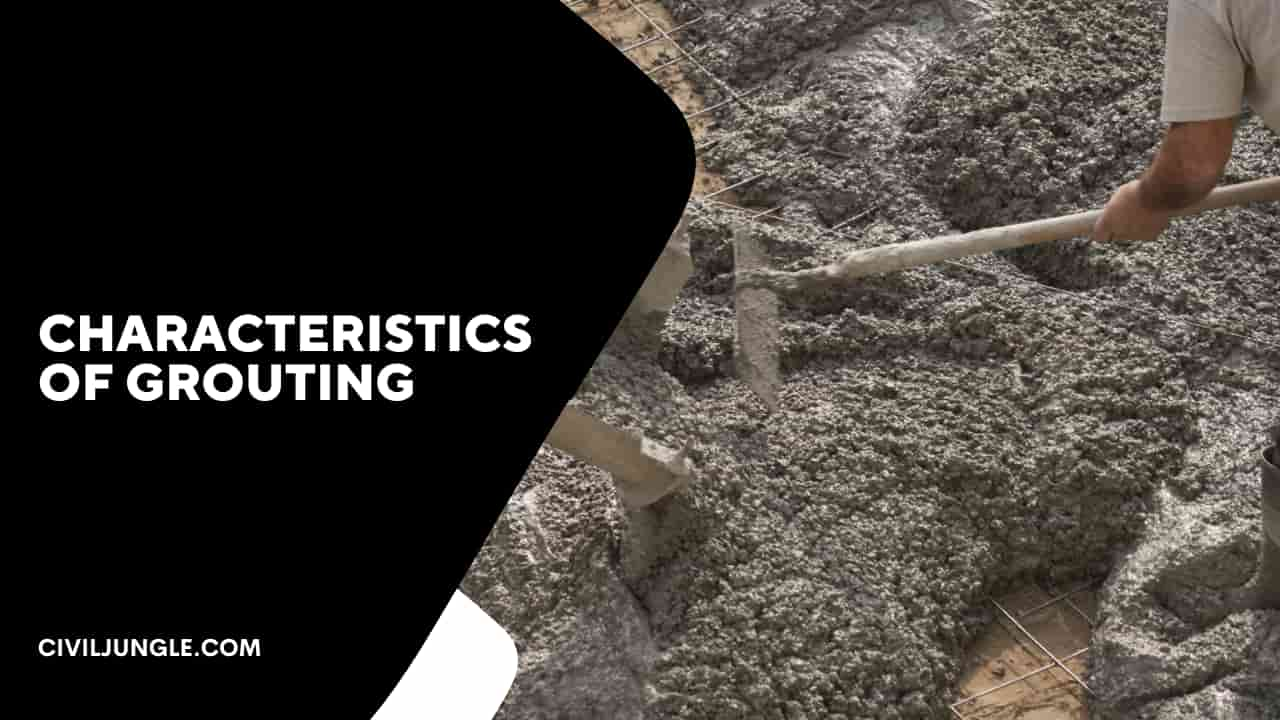 Non-corrosive
Non-corrosive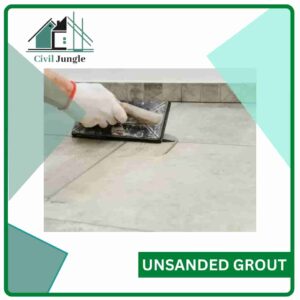

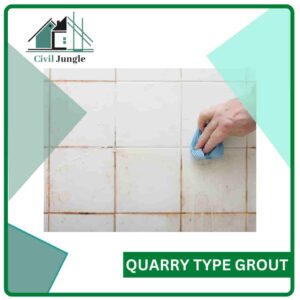 This is the same as finely sanded grout
This is the same as finely sanded grout 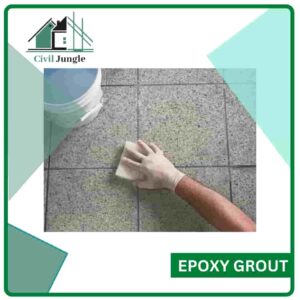 This consists of an epoxy resin and hardener.
This consists of an epoxy resin and hardener.
Leave a Reply